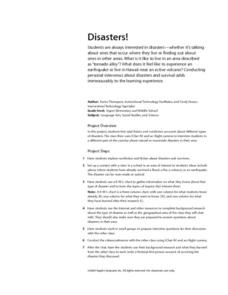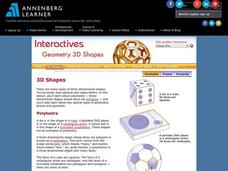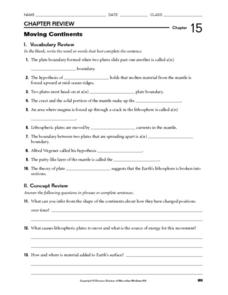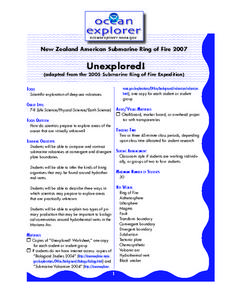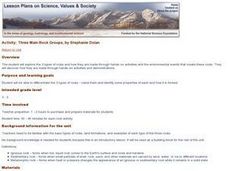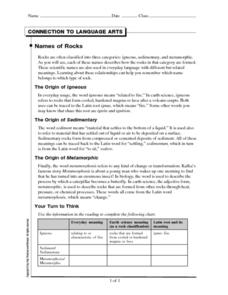Curated OER
Disaters!
Students read a fiction and nonfiction accounts about different types of disasters. The class uses iChat AV and iSight camera to interview students in a different part of the country about natural or manmade disasters in their area....
Curated OER
Extreme Weather
Students examine different types of extreme weather and how to prepare for them. In this weather lesson plan students explore different types of extreme weather and create disaster preparation posters for different types of extreme weather.
Curated OER
2005 Submarine Ring of Fire Expedition: Unexplored
Learners compare and contrast submarine volcanoes at convergent and divergent plate boundaries, infer kinds of living organisms that may be found around hydrothermal vents, and describe ways in which scientists may prepare to explore...
Curated OER
Getting Fired Up
Students explore first-person accounts of volcanic eruptions throughout time and use second-hand information about volcanoes. They use both types of accounts to write news articles covering the events of a historic volcanic eruption as...
Curated OER
Moving the Earth
Fifth graders simulate the three primary types of fault movement lateral fault, reverse fault, and normal fault by positioning their hands and applying pressure to them to observe the similar action taking place in the Earth's crust.
Curated OER
Volcanoes: How Safe Are They?
Pupils explore the most dangerous volcanoes on Earth, plot their locations, and research different volcanic hazards.
American Museum of Natural History
What Do You Know About Earth?
Time to rock and roll! Young scientists test their knowledge about rocks found on Earth and what they tell scientists. A 10-question quiz focuses on the different types of rocks, how they are formed, and what they are made of.
Curated OER
Hazards: Kindergarten Lesson Plans and Activities
The last unit in the series allows kindergarteners to see the dangers and hazards associated with each of the natural disasters learned so far in the series—earthquakes and volcanoes. They listen to sounds associated with the disasters.
Annenberg Foundation
Geometry 3D Shapes: 3D Shapes
Explore vocabulary related to three-dimensional shapes. An instructional website describes the characteristics of different geometric solids. Learners can use an interactive component to view nets, faces, vertices, and edges of common...
Curated OER
Formation of Volcanoes
Ninth graders explore the process of different volcanoes and how plate tectonics plays a role. In this volcanic activity students complete several assignments on plate tectonics.
Curated OER
Why Are Volcanoes Dangerous?
Students investigate the causes and characteristics of volcanic eruptions including pyroclastic eruptions. They study the effects of natural disasters.
Curated OER
Volcanoes
Fifth graders study volcanoes. They watch a demonstration that represents the eruption of a volcano and discuss the similarities and differences between the model and a real volcano.
Curated OER
Plate Tectonics: Fifth Grade Lesson Plans and Activities
Fifth graders continue their investigation of the plate tectonics cycle with an exploration of the movement of Earth's crust. During the lab, young geologists conduct an experiment to discover the result of different types of stress...
Oregon State
World Map of Plate Boundaries
Young geologists piece together the puzzle of plate tectonics in an earth science lesson. Given a physical map of the world, they search for land formations that indicate the location of different types of plate boundaries.
Curated OER
Rocks: Mineral Mixtures
A 22-slide set provides pretty much everything you need to teach the rock cycle except the actual specimens. All of the slides contain graphics or photographs to help describe the process, and most even have links to educational videos....
Curated OER
Regents High School Examination: Physical Setting Earth Science 2006
Test your class on earth science with this extensive resource. This test, created by The University of the State of New York Regents, is made up of 50 multiple choice questions and 32 short answer questions that cover the branches of...
Curated OER
Moving Continents
In this moving continents worksheet, students review the different types of plate boundaries, what causes earthquakes, and where volcanoes are formed. This worksheet has 10 fill in the blank and 9 short answer questions.
Curated OER
Volcanoes In Japan
Sixth graders study the characteristics of volcanoes in this unit. They apply the research to the study of three volcanoes in Japan. They complete mapwork, identify indicators of impending volcanic activity, and describe the dangers...
Curated OER
Protecting Habitats and Species
Students recognize that scientists continuously gather and interpret data to understand and predict relationships among natural phenomena. They research various volcanoes and plot the volcano locations on a world map.
Curated OER
Worksheet 3 Vocabulary Review: Words That Mean the Same
In this synonyms instructional activity, students read 10 sentences and analyze the word in bold type. From two choices, students circle the letter of a word or phrase that means the same.
Curated OER
Plate Tectonics
Students simulate the three types of plate boundaries using robots. In this earth science lesson plan, students explain how earthquakes and volcanoes are formed. They collect real-world earthquake data and plot them on the map.
Curated OER
Unexplored!
Students explore volcanoes. In this deep sea volcano activity students complete a worksheet and various activities.
Curated OER
Three Main Rock Groups
Students are introduced to igneous, sedimentary and metamorphic rocks. They use foods to demonstrate the basic formation of each type of rock, read books about rock formation and view related videos.
Curated OER
Names of Rocks
In this types of rocks worksheet, students read about igneous rocks, sedimentary rocks and metamorphic rocks. They complete a chart about the three types of rocks and use the information from the reading to determine the origin of their...


